
views
X
Research source
and their burrows can do significant structural damage to buildings.[2]
X
Research source
[3]
X
Research source
The good news is that there are numerous ways to get rid of groundhogs: you can trap them humanely, fumigate them, and exterminate them without fumigation. You can also discourage groundhogs from settling down by making your garden or yard less appealing.
Trapping Groundhogs Humanely

Do your research. Before you commit to trapping groundhogs in a live trap and releasing them elsewhere, be sure to check with your state’s wildlife agency about relocating trapped wildlife, as laws vary from state to state.
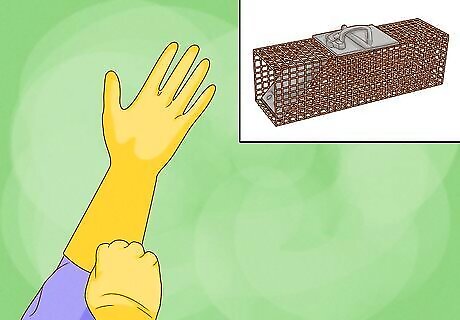
Wear gloves when handling the trap, to keep your scent off it. Place it trap directly in front of the burrow entrance. It can be helpful to spray it with a hose and roll it in dirt to help camouflage it.
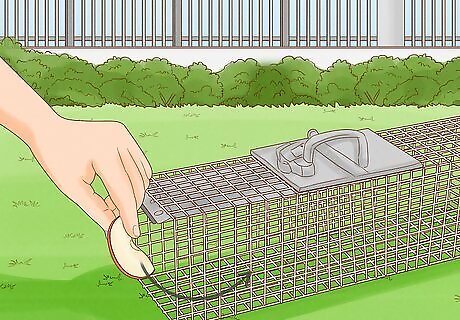
Bait the trap with fruits or vegetables. Groundhogs particularly like cantaloupe, but if you have noticed anything disappearing especially quickly from your garden you can use this as well. The bait should be placed as far back as possible, to ensure that the groundhog must enter the cage fully in order to reach it. Place a brick on top of the cage to help prevent the animal from rolling it over once trapped.
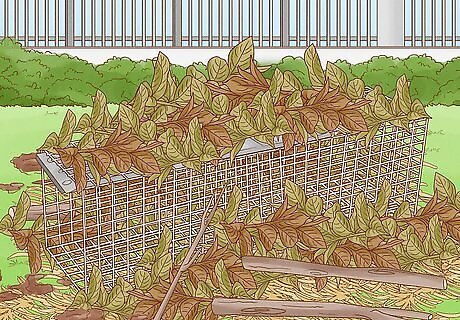
Camouflage the trap. Place sticks, dirt, and leaves inside and around it, and then set the trigger. This will vary slightly depending on the trap you purchased. Follow the instructions on the packaging carefully.
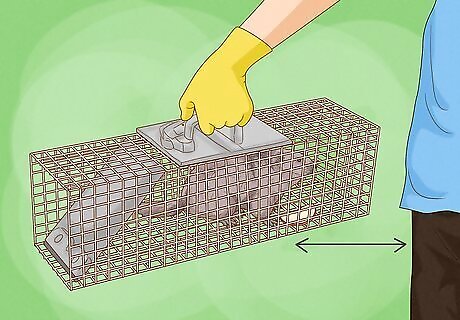
Check the trap regularly. A trapped groundhog is an unhappy groundhog, and the longer you leave it in the trap the more likely it is to injure itself in distress. Once you have trapped a groundhog, handle the cage only while wearing thick gloves, and hold it away from your body.
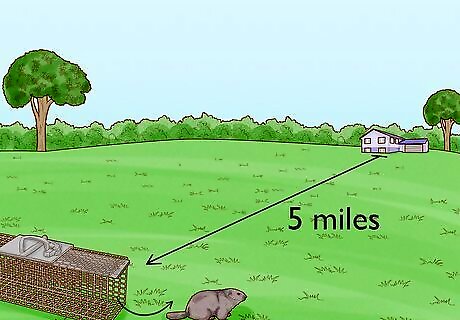
Release the groundhog. Transport it at least 5 miles away from your property, to an area that will be attractive to it as a new home. While groundhogs are not usually aggressive, you should stand back as it exits the trap.
Fumigating
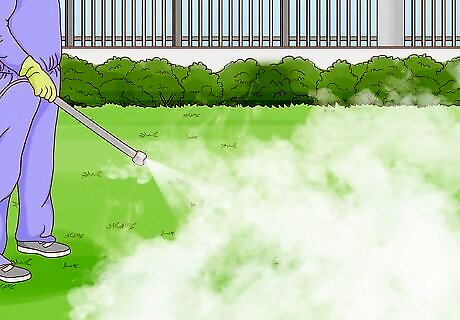
Consider carefully. There is a good chance poison is not your best bet. Many people do not recommend using poison to deal with groundhogs, for a number of reasons. Before you resort to this method, consider bringing in a professional to assess the situation. Killing animals with poison often inflicts great suffering. The groundhog may die slowly from internal bleeding, suffocation, or a number of other painful things, over the course of hours or days. It is not reliably effective. Most legal rodent poisons are designed to kill rats or mice, not woodchucks. Substances toxic to groundhogs are also toxic to humans and all other animals. Pets can and frequently do get into poison, and it can impact human health as well. The best-case scenario is that you will have toxic, rotting rodent bodies in your lawn to dispose of. The bodies will smell awful as they decay underground, and may attract other pests. The cleanup process can be time-consuming and dangerous.
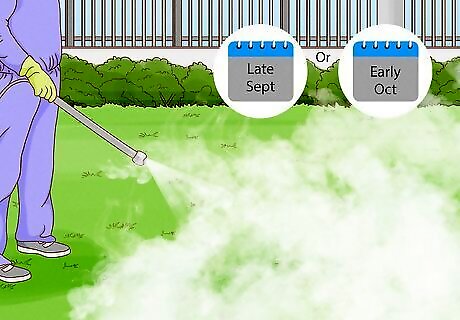
Pick your moment. Groundhogs tend to go into hibernation in late September or early October, and their hibernation chamber is walled off, making them impossible to fumigate after this time.
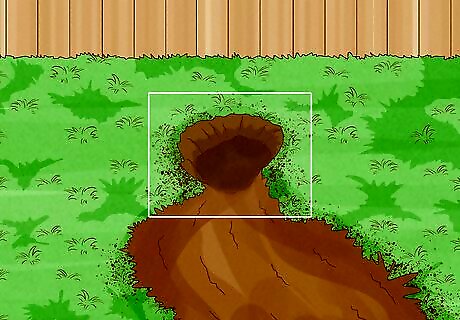
Locate all the burrow entrances. Place a piece of pre-cut sod beside each one.
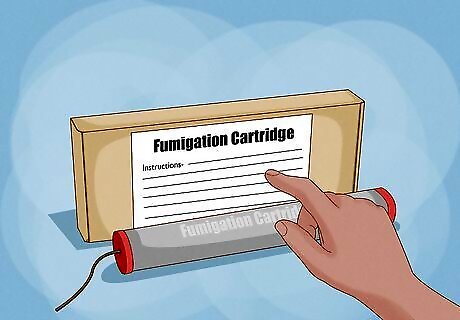
Read the instructions carefully. The process of igniting and placing the fumigation cartridge varies from brand to brand.
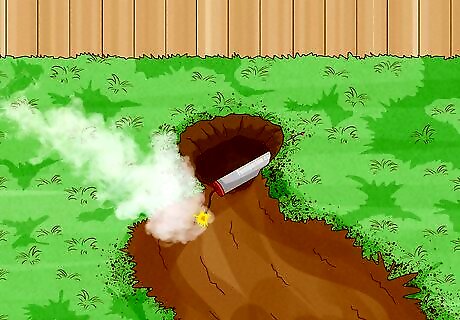
Light the cartridge. Place it as deep inside the burrow as you can reach without throwing it. Use the end of a shovel to push it even farther.
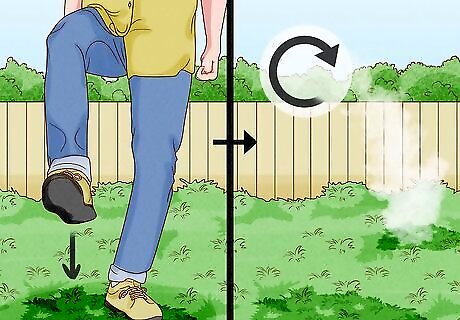
Place the pre-cut sod into the hole. Stomp on it to create an airtight seal. Wait about five minutes, and watch the other holes to see if they are leaking smoke. If so, seal them with sod. Repeat until all the burrow entrances are tightly sealed.
Killing Groundhogs Without Fumigation
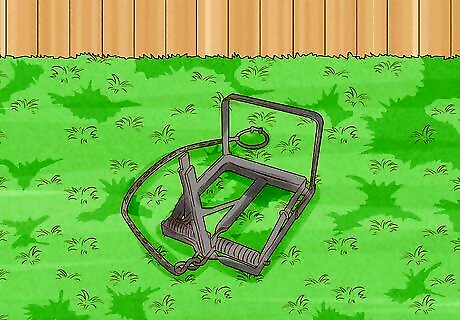
Use lethal traps. This can often be an inhumane solution, as these traps do not always kill animals instantly. It can also be difficult to know which burrow entrance to place the trap outside, and the traps pose a significant danger to small children and pets. The specifics of setting lethal traps vary depending on the type you buy, and you should pay close attention to the instructions.
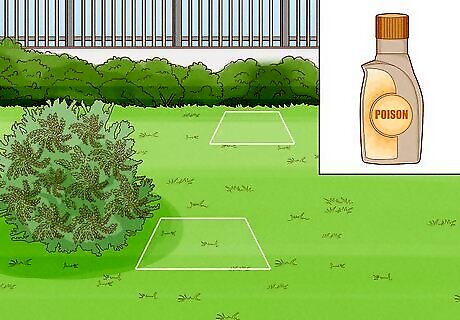
Poison them. This poses the same threats as traps and fumigation: the poison poses a danger to pets and people, and the bodies will be very hard to deal with if they die underground. If you decide to go this route, however, the process is very straightforward: place the poison in the areas of your garden that the groundhogs most like to frequent.
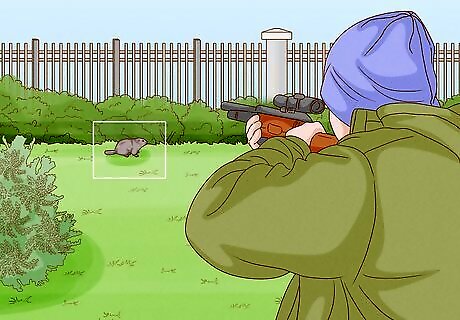
Shoot them. This is generally only an option if you live in a removed area, and are an excellent marksman. A groundhog that has been shot but not killed can become much more dangerous and aggressive than it otherwise would be, and can present a real danger to children and pets if it gets away. As such, this is generally not a recommended way to deal with groundhogs.
Discouraging Groundhogs from Settling Down
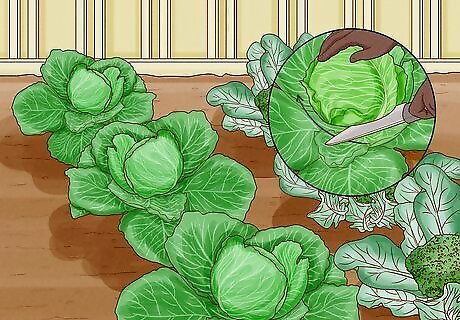
Make your yard less attractive to groundhogs. The best way to deal with groundhogs is to be proactive, and keep them from making their home in your garden to begin with. If you already have a groundhog problem, come back to this section when you have gotten rid of them to help keep your property groundhog-free. Harvest vegetables as early as possible. Remove brush and piles of rock from your yard to help make them feel more exposed, and trim back any overgrown foliage. Because they are prey animals, groundhogs feel most comfortable when they can easily take cover from predators. Remove tree trunks they could use to grind down their teeth. Fill in abandoned burrows with rocks or gravel.
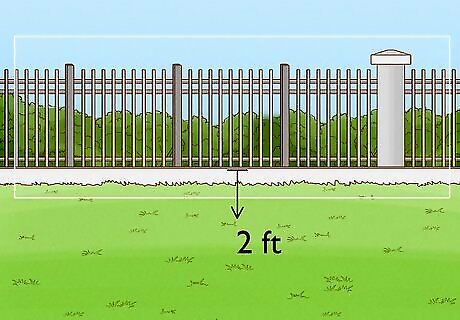
Build a fence around your garden. Although they don’t look much like their squirrel cousins, groundhogs are surprisingly good climbers. To be effective at keeping them out, a fence should be made of wire with openings no larger than 3 inches. They should measure 3 or 4 feet above ground level, go at least 2 foot deep into the ground, and bend out awkwardly at the top to make climbing difficult; if possible, create an “L” shape underground for maximum effectiveness.
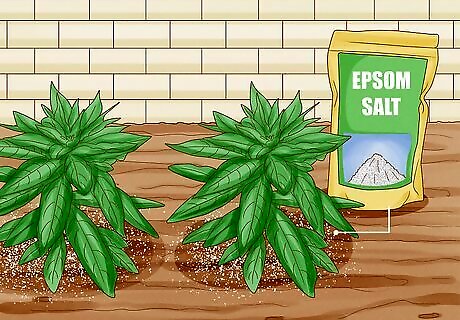
Sprinkle the plants in your garden with Epsom salts. This will make them taste bad to groundhogs. The salts will wash off in the rain, however, and need to be reapplied.
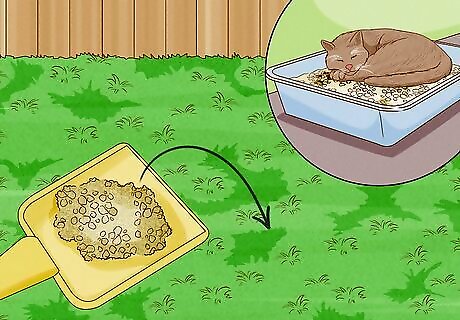
Scare them off. If groundhogs think your yard is frequented by predators, they will be less likely to set up shop there. If you have a cat, sprinkle small piles of used cat litter strategically around your garden. If you do not have a cat, ammonia-soaked rags can be used to similar effect (the groundhogs will mistake the smell of ammonia for urine). Ammonia can damage your lawn, so if this is a concern you should put the rags on top of stones or pieces of wood. You can also buy a number of chemical repellents for this purpose, though there is some debate about how effective these really are.




















Comments
0 comment